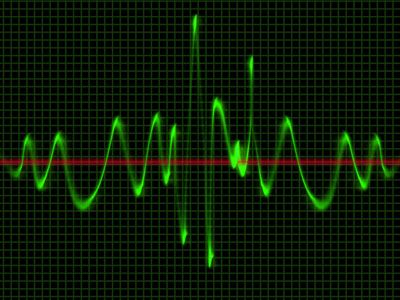This senior high school Physics quiz will challenge you on properties of waves. Every day, probably without even thinking about it, all life on Earth uses waves. There are light waves for seeing and sound waves for hearing. Humans have discovered how to use radio waves for communications and microwaves for TV and your cell phone. You can't see most waves but they are all around you. Some waves that you can see are water waves and you can see and feel the effects of the waves that disturb the Earth during an earthquake.
But what exactly is a wave? A wave is a disturbance in a medium that transfers energy from one place to another. You can really get a feel for this if you have ever seen video clips of earthquakes or tsunamis. These carry huge amounts of energy, sufficient energy to destroy vast areas.
The energy from the epicenter of an earthquake travels outwards as waves, where it reaches the surface. The energy is so great that it can move large chunks of rock and soil through several meters in a few seconds. Tsunamis have so much energy that they can travel for many kilometers inland from the coast, destroying almost everything in their path.
Waves come in two basic types - transverse and longitudinal. Transverse waves vibrate at right angles to the direction in which the energy is traveling whilst longitudinal waves vibrate in the same direction as the energy is traveling. All waves require a medium that allows the vibrations to pass. Longitudinal waves require a material medium (a medium made from matter) in order for them to pass as the energy is transferred by the particles of the medium vibrating backwards and forwards. They travel as a sequence of regular compressions and rarefactions. Longitudinal waves cannot therefore travel through space as it is a vacuum and contains very few particles, certainly not enough to be able to transmit sound. Science fiction films ignore this, you would not in fact hear the engines of a spacecraft, hear any explosions or the sound of guns firing, but that would make the films really boring!
In senior high school, you need to know some examples of waves of both types and their properties. All sound waves and some earthquake waves are longitudinal. Water waves, light waves and X-rays are all examples of transverse waves. A wave that causes the particles of a substance to vibrate can be referred to as a mechanical wave. Examples of these are all earthquake waves, water waves and ultrasonic waves that are being used to break down kidney stones. Mechanical waves can be transverse or longitudinal.
Electromagnetic waves form a continuous spectrum of related transverse waves that transfer energy from one place to another at the same speed - the speed of light. Their wavelengths vary from about 10-15 meters to more than 104 meters. They are non-mechanical, in other words, they do not require matter in order to be able to transfer energy, so they are therefore the only waves that can travel in a vacuum. The medium that they require is the electric and magnetic fields that extend throughout the known universe. In senior high school, you need to know the order of these in terms of the energy they carry, their frequencies and wavelengths.








